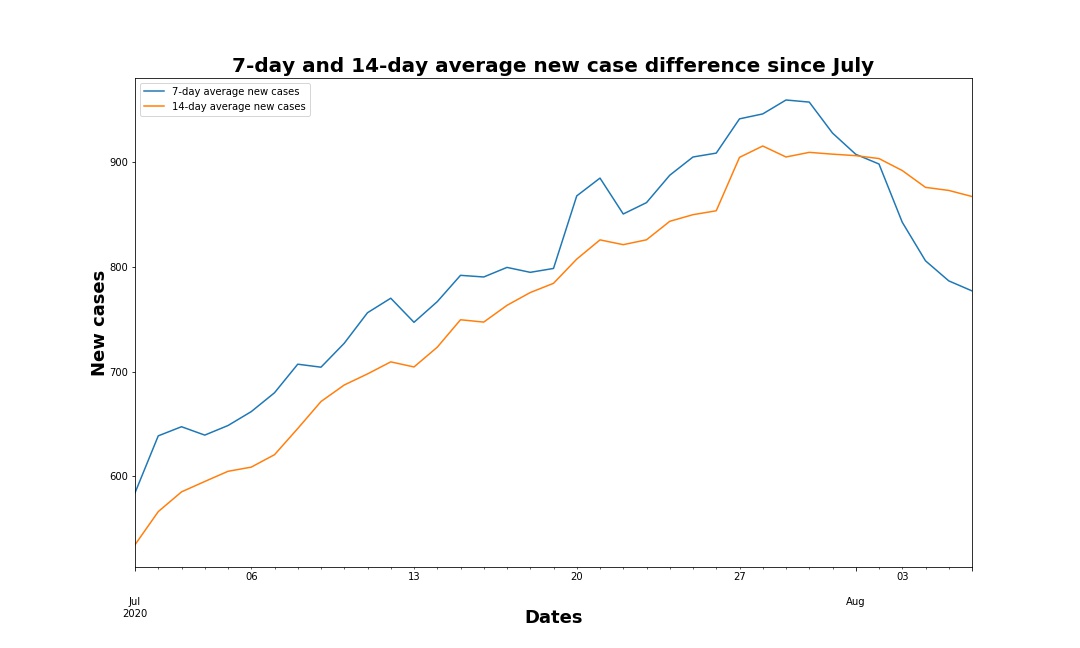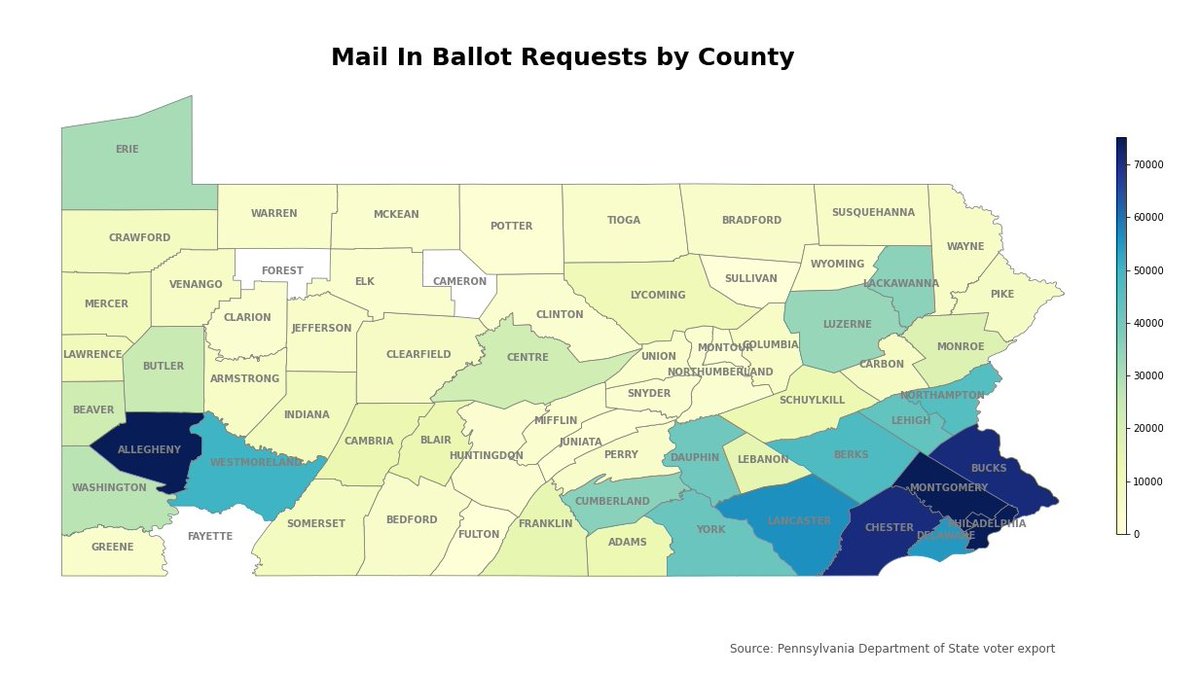
I wanted to follow up on @davegilmartin's question about ballots returned from my first data thread this week. He asked about early voting turnout by county and by party. Strap in, we've got to talk about color choice and geospatial data analysis 1/???
Let's start here: here's the overall breakdown of total voters by major parties in each county. The darker the blue, the more democratic voters and vice versa. While GOP voters trail Dems, the margins aren't so far off that we can't use a decent color spectrum. 

In the case of this map, I'm subtracting Dems from GOP and setting our range at -25,000 to 25,000 because each party has at least several counties where they lead by that many voters. 

Between 25% and 60% of registered Democrats in each county have requested a ballot. Republicans haven't really embraced Mail-in voting quite as much, with only between 12% and 30% of voters asking for a ballot before Nov. 3. 



Democrats are also returning their mail-in ballots at slightly higher rates than Republicans. As a percentage of ballots requested, counties are seeing an average of 70% returns for Democrats and 55% for Republicans. 



I'm calling the returned mail-in percentages the "mail-in turnout" for now. Comparing turnout rates is a little difficult. If I simply subtract one party turnout by the other, I get this monstrosity. 

This map makes it look Republican mail-in turnout is higher in some counties. The problem is, that's not what this map shows. The color bar doesn't go into the negative range, so all of these counties have higher Democratic turnout. 

Here's the same data with the color bar normalized (-50% to 50% percentage point difference). This one might more accurately display the party percentages, but we practically remade a democrat-only chart above. 

In case you're wondering why I included those last two maps, I thought I should offer examples of iffy graphics. You're all going to see a lot of maps over the next few weeks. Best to point out potential problem areas as you all try to figure out what's going on.
In case you have no idea what any of this is, here's the link to my first election data thread earlier this week. I think we'll look at gender and age by party and town or county tomorrow
https://twitter.com/ulleryatintell/status/1320595207545606144?s=20
As always, I'm using @PythonPr language, @matplotlib
@geopandas @pandas_dev in an @ProjectJupyter notebook.
@threadreaderapp
unroll
@geopandas @pandas_dev in an @ProjectJupyter notebook.
@threadreaderapp
unroll
• • •
Missing some Tweet in this thread? You can try to
force a refresh














